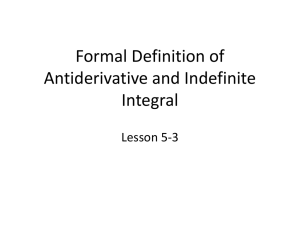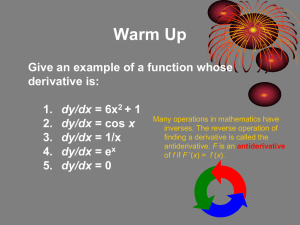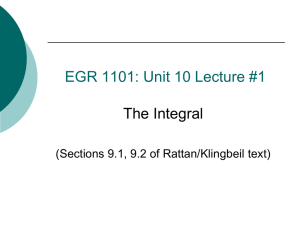7.1: Antiderivatives
advertisement
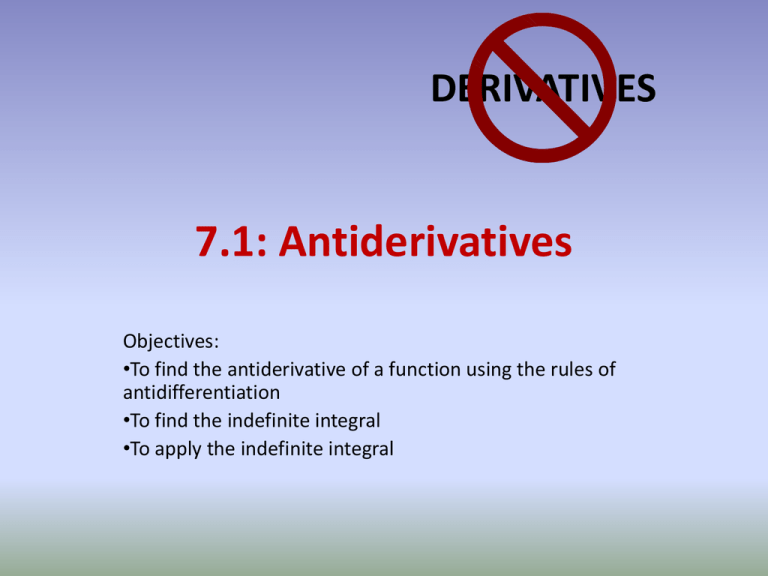
DERIVATIVES 7.1: Antiderivatives Objectives: •To find the antiderivative of a function using the rules of antidifferentiation •To find the indefinite integral •To apply the indefinite integral • Up until this point, we have done problems such as: f(x)= 2x +7, find f’(x) • Now, we are doing to do problems such as: f’(x)=2, find f(x) • We do this through a process called antidifferentiation Warm Up: 1. Find a function that has the derivative f’(x)=3x2+2x 2. Find a function that has the derivative f’(x)=x4-4x3+2 DEFINITION: ANTIDERIVATIVE If F’(x) = f(x) then F(x) is an antiderivative of f(x) F’(x) = 2x, then F(x) = x2 is the antiderivative of 2x (it is a function whose derivative is 2x) Find an antiderivative of 6x5 2 antiderivatives of a function can differ only by a constant: f’(x) = 2x F(x) = x2 +3 g’(x)=2x G(x)=x2-1 F(x)-G(x)= C The constant, C, is called an integration constant INDEFINITE INTEGRAL!!!!! f ( x) dx integral sign f(x) integrand dx change in x (remember differentials?!?!) Be aware of variables of integration… If F’(x) = f(x), then real number C f ( x)dx = F(x) + C, for any F(x) is the antiderivative of f(x) This is a big deal!!!!!!! Example: Find the indefinite integral. 2 xdx Rules of Integration Power Rule Constant Multiple Rule Sum or Difference Rule n 1 x n x dx n 1 k f ( x)dx k f ( x)dx (k has to be a real #, not a variable) f ( x) g ( x)dx f ( x)dx g ( x)dx Examples: Find the indefinite integral 1. 2 x 3x dx 2 2. cos xdx 3. 4t dt 3 2 x 2 4. x dx 5. x 2 2 5 dx More Rules….. e dx e x x C kx e kx e dx k C 1 x dx x dx ln x C 1 Examples: Find the Indefinite Integral 6 1. dx x 2. e3 x x 2 dx 1 t 2 2 3. sec t e dt Initial Value Problems Find the function, f(x), that has the following: 1 f ' ( x) 2 x; f (2) 1 x f ' ( x) 3x 1; f (2) 4 2 Find an equation of the curve whose tangent line has a slope of f’(x)=x2/3 given the point (1, 3/5) is on the curve. Applications 1. An emu is traveling on a straight road. Its acceleration at time t is given by a(t)=6t+4 m/hr2. Suppose the emu starts at a velocity of -6 mph (crazy…its moving backwards) at a position of 9 miles. Find the position of the emu at any time, t. (Acceleration due to gravity= -32 ft/sec2) A stone is dropped from a 100 ft building. Find, as a function of time, its position and velocity. When does it hit the ground, and how fast is it going at that time?
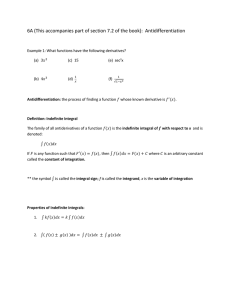
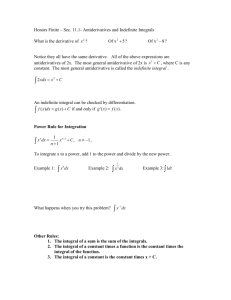
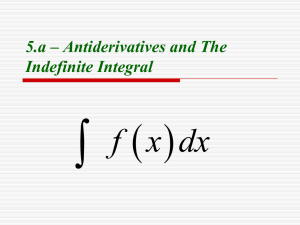
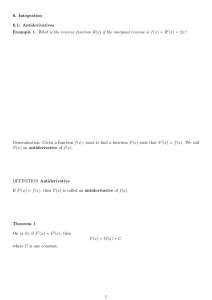
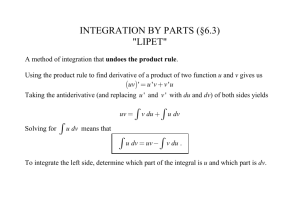

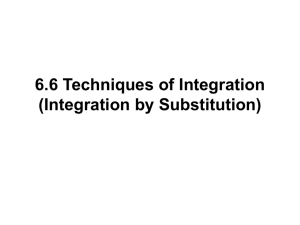
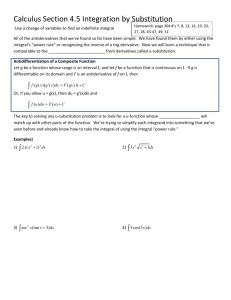
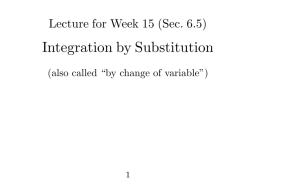

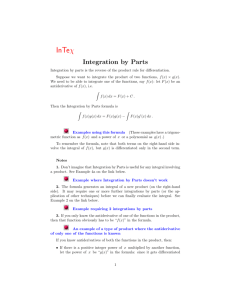
![Antiderivatives [7.5]](http://s2.studylib.net/store/data/009839726_1-71c8c3c8e7789734542b65fee1d9e6d4-300x300.png)
